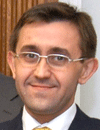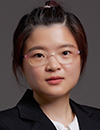
Thursday, 7 November 202400:00 |  | Keynote Presentation Title to be Confirmed
Thomas Wirth, Professor, Cardiff University, United Kingdom
|
| 00:00 |  | Keynote Presentation Title to be Confirmed
Jean-Christophe Monbaliu, Professor of Organic Chemistry, Center for Integrated Technology and Organic Synthesis (CiTOS), University of Liège, Belgium
|
| 00:00 |  | Keynote Presentation Title to be Confirmed
Shinichiro Fuse, Professor, Nagoya University, Japan
|
| 00:00 |  | Keynote Presentation Title to be Confirmed
Christophe Len, Professor, Chimie ParisTech, CNRS, France
|
| 00:00 | Title to be Confirmed
Shusaku Asano, Assistant Professor, Kyushu University, Japan
| 00:00 |  | Keynote Presentation Title to be Confirmed
Marcus Baumann, Assistant Professor, School of Chemistry, University College Dublin, Ireland
|
| 00:00 |  | Conference Chair Title to be Confirmed
Paul Watts, Distinguished Professor and Research Chair, Nelson Mandela University, South Africa
|
| 00:00 |  | Conference Chair Title to be Confirmed
Guangsheng Luo, Professor, Tsinghua University, China
|
| 00:00 | Sustainable Chemical and Biochemical Processes Through Continuous Synthesis and Separation
Nopphon Weeranoppanant, Associate Professor, Burapha University, Thailand
Conventional chemical processes often involve the use of toxic reagents, high energy consumption, and inefficient step economy, posing sustainability challenges. To address this, our research group employs alternative catalytic systems such as biocatalysis and photocatalysis. Different strategies, including catalyst immobilization and hybrid separation-reaction systems, can be implemented to facilitate catalyst recycling and increase productivity. In this talk, demonstration of such strategies with continuous synthesis and separation will be discussed. | 00:00 |  | Keynote Presentation Low Cell Voltage Electrosynthesis of Hydrogen Peroxide
Kai Wang, Associate Professor, Department of Chemical Engineering, Tsinghua University, China
Electrochemical oxygen reduction reaction (ORR) via a selective 2e-
pathway offers a great opportunity for the synthesis of hydrogen
peroxide as an alternative of traditional anthraquinone route.
Unfortunately, the cell voltage of hydrogen peroxide electrosynthesis on
neutral condition still requires improvement to meet the industrial
demands, where high productivity and low input energy are desired. In
this report, crucial impacts of reactor component on the relationship of
cell voltage and current density and the over-potentials of each part
of a flow cell reactor for hydrogen peroxide electrosynthesis are
introduced, which indicate that the cathodic solution overpotential has
a great contribution to the cell voltage. When applying thin cathodic
solution channel, the hydrogen peroxide can be synthesized at 2.28 V
cell voltage with 300 mA/cm2 current density and 97.1% Faraday
efficiency, corresponding to an energy consumption of 3.70 kWh/kg H2O2,
which is much lower than the literature results. The produced hydrogen
peroxide can be directly used for synthesizing high purity
2,2'-dibenzothiazole disulfide, showing the potential industrial value
of hydrogen peroxide electrosynthesis technology.
The authors acknowledge the support from National Natural Science
Foundation of China (No. 22178194) and for this work. |
| 00:00 |  | Keynote Presentation Automatic Measurement for Photoreaction Kinetics Based on Single-Liquid-Slug Oscillatory Flow
Fang Zhao, Associate Professor, East China University of Science and Technology, China
An automatic single-liquid-slug oscillatory flow platform was
established for the kinetic investigation of photochemical reactions.
Reaction parameters including concentration, reaction time, light
intensity, pressure, and temperature were controlled precisely in an
automatic manner, and the reaction outcomes were obtained accurately
via, integration of an online HPLC. With the reaction kinetics
measurement performed for the photocatalytic oxidation of citronellol by
Ru(bpy)3Cl2 at a volume scale of 50 µL, it was demonstrated that the
single-liquid-slug oscillatory flow method was capable of achieving
material and time savings of 70% and 38% respectively as compared to the
conventional batch method, and of 80% and 62% respectively as compared
to the continuous flow method. The four reaction orders manifesting the
effects of the substrate concentration, photocatalyst concentration,
light intensity, and oxygen pressure, respectively, were attained as
well as the photoreaction rate constant. Furthermore, the kinetic data
obtained under a series of temperatures also shed light on the
photoreaction mechanism which exhibited a relationship between the
photoreaction rate constant and temperature that deviated from the
Arrhenius law. The approach developed in this work is especially useful
for the kinetic studies of photoreactions with relatively slower
intrinsic reaction kinetics, achieving a more resource-efficient
practice with higher repeatability and accuracy. |
| 00:00 |  | Keynote Presentation AI-Empowered Flow Chemistry Instrument Manufacturing and Application
Di Sha, Chief Scientist, Ou Shisheng (Beijing) Technology Co. Ltd., China
Since its establishment in 2015, Ou Shisheng (Beijing) Technology Co., Ltd. has cooperated with Professor Guangsheng Luo of Tsinghua University and his research team. Based on microreaction continuous flow chemistry synthesis technology, we have innovatively developed products according to specific chemistry reactions or specific applications in the biology field, including a series of dedicated intelligent equipment, inline detection, sensors and tool-based automation devices, from early research and development in the laboratory to flow chemistry equipment and software for scale-up production. According to the continuity characteristics of flow chemistry, under the premise of the Internet of Things, AI is assisted in early stage of research and development, and the perfect combination of AI and hardware not only greatly improves efficiency, but also accumulates a large amount of real data to provide sufficient data support and guide new product development. At present, we have collaborated with more than 1,000 users in pharmaceutical, CXO, fine chemicals, catalysts, new energy, semiconductor and other industries around the world, including enterprises and scientific research groups in universities. |
| 00:00 |  | Keynote Presentation Continuous Flow Reaction for the Synthesis of Fine Chemicals
Shengyang Tao, Dean, Dalian University of Technology, China
Continuous flow chemical reaction is a clean, efficient, and safe synthesis method that has developed in recent years. With this method, researchers can synthesize a variety of high-value-added fine chemicals. This presentation introduces our group's research progress in designing a continuous flow reactor, synthesizing fine chemicals by continuous flow chemical reaction, and optimizing the continuous flow reaction process by artificial intelligence technology. |
| 00:00 |  | Keynote Presentation Controllable Microfluidic Emulsions for Creating Functional Particles
Wei Wang, Professor, School of Chemical Engineering, Sichuan University, China
Emulsion droplets play important roles in template synthesis of functional particles for various fields such as controlled release, catalysis, and separation. The features of emulsion droplets including their size and size distribution, shape, composition, and structure generally determine those features of the resultant particles and their functions for marvelous applications. This presentation introduces our recent works on microfluidic emulsification techniques for controllable emulsion production and functional particle synthesis. First, versatile microfluidic emulsification techniques for controllable generation of emulsion droplets from simple single emulsions to complex multiple emulsions are introduced. Then, rational synthesis of particles with controllable sizes, shapes, compositions, structures, and functions by using controllable emulsion droplets from microfluidics as templates are introduced. |
|
|

 Add to Calendar ▼2024-11-07 00:00:002024-11-08 00:00:00Europe/LondonFlow Chemistry Asia 2024Flow Chemistry Asia 2024 in Tokyo, JapanTokyo, JapanSELECTBIOenquiries@selectbiosciences.com
Add to Calendar ▼2024-11-07 00:00:002024-11-08 00:00:00Europe/LondonFlow Chemistry Asia 2024Flow Chemistry Asia 2024 in Tokyo, JapanTokyo, JapanSELECTBIOenquiries@selectbiosciences.com